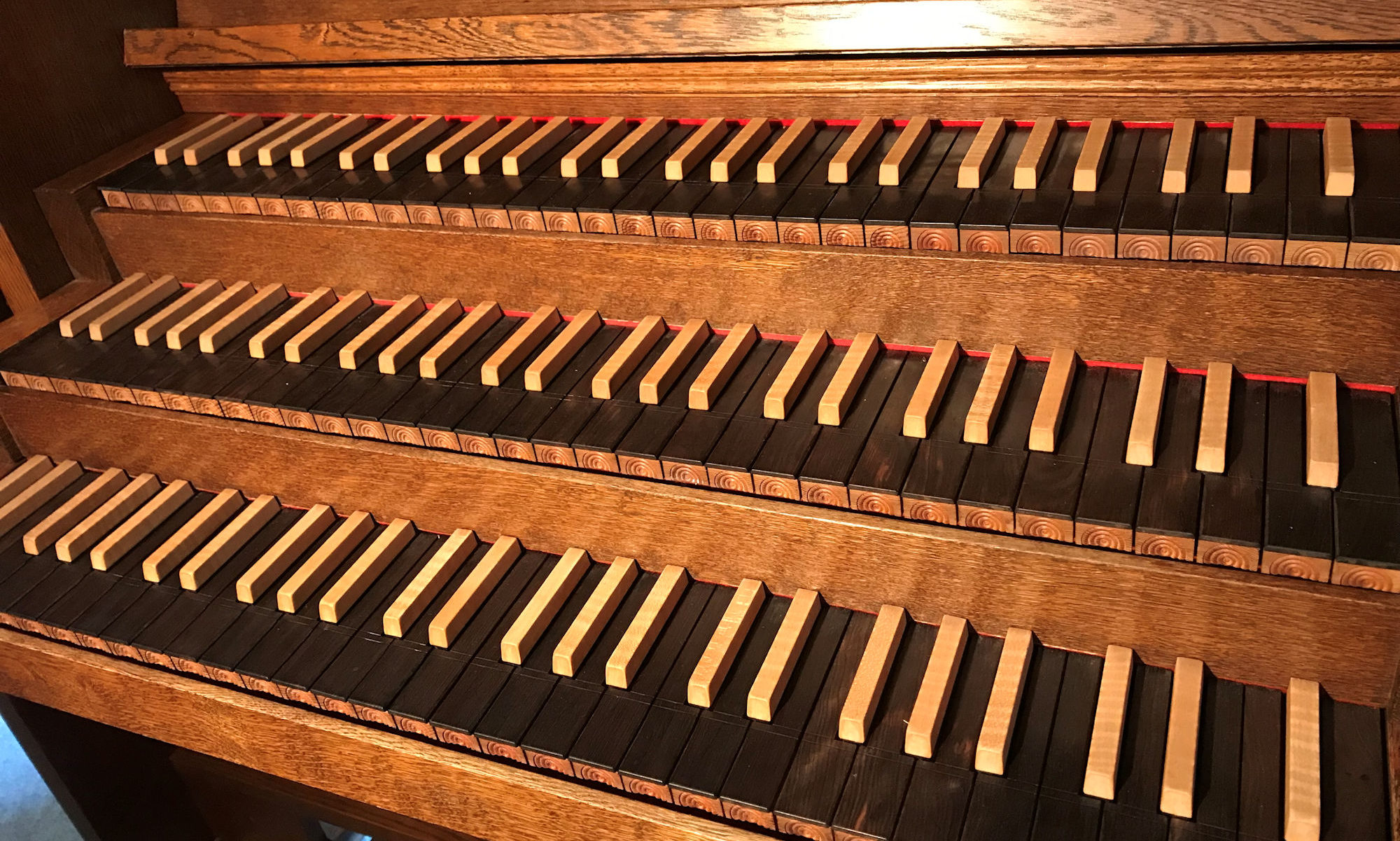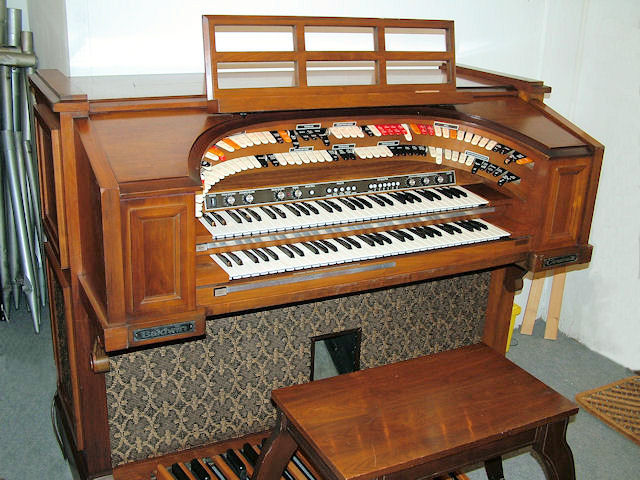
Exuberant Horse Shoe Organ
This rare American organ is extremely heavy due to the massive wood construction. Two rows of tabs form spectacular horse shoe, alas many tab switches are rhythm selectors for the beat box only. Keyboard action is pretty nice, I was surprised, that the keyboard make is quite the same as on the Dr. Böhm CnT and later.
Inside are the TOS divider generator and electronic key switching circuits. The wiring of all footages are done on several huge printed circuit boards. Tibia filters are twice per octave and sound very fine. Sawtooth ranks are added by 3 octave and are nice too (Böhm Orchester has 5 octaves sawtooth and sounds much more like rectangle waves…).
There is an own circuit for the piano rank with polyphonic percussion (percussion can be disabled, to get additional organ ranks), great.
Pedal mechanics does not convince me a lot, a bit fragile but it does its work. There is a 16″ brass sound which reminds me on the symphonizer wave shape sound of the early Lowreys.
What does really turn this organ into a theatre organ is the extraordinary tremolo effect. It does not have a mechanical Leslie, but a lush Chorus circuit with quite a lot of switches and possibilites.
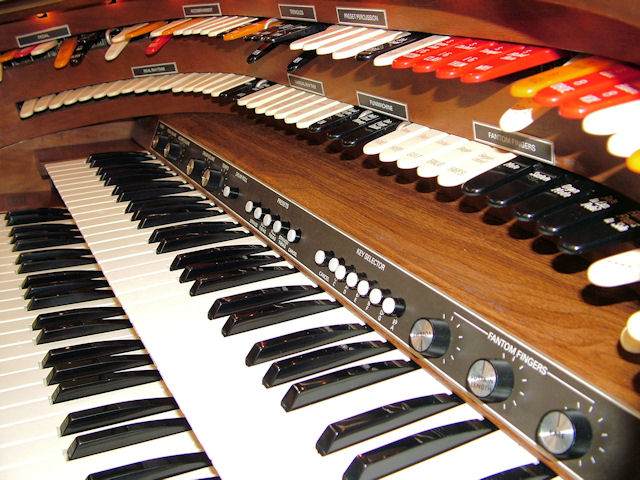
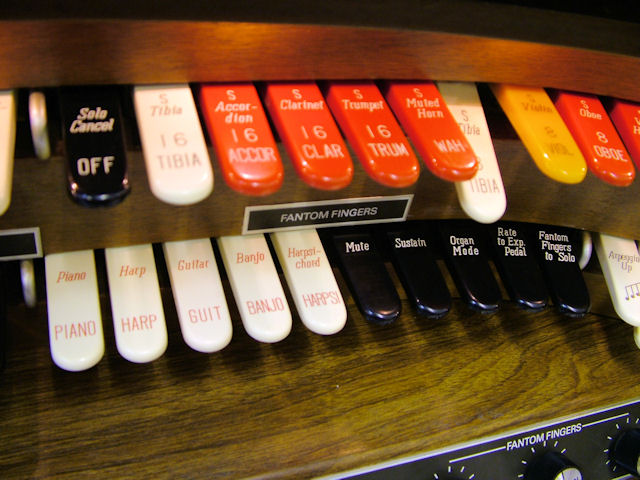
The rhythm accompaniment allows the combination of styles and instruments, it is fun to play with. Fantom fingers is Baldwin’s contribution to the One-Finger-Play for laymens, useable is the arpeggiator which reacts to every crooked chord. The single rhythms can be combined to create new patterns.
The reed (sawtooth) ranks of the upper manual and the tabs for the piano circuit, called Fantom Fingers.The Fantom Fingers have their own keyer circuit with variable systain and 5 stops. They can be played either from the Solo ord Accomp keyboard.
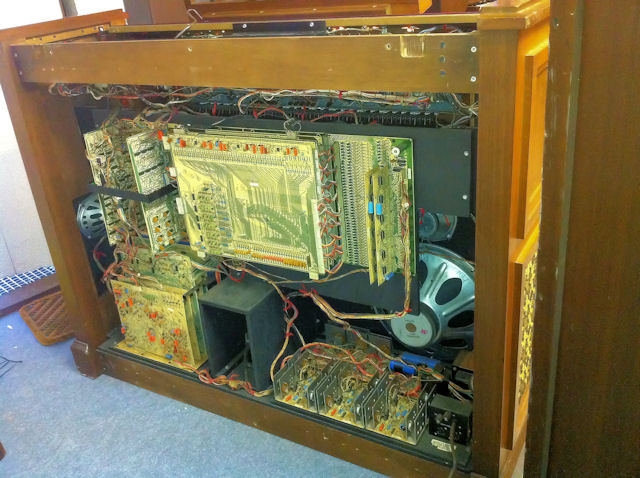
Lower right: 3 channel amplifier and power supply.
Lower left cage for accompaniment
Upper left: Fantom Fingers keyers and arpeggiator logic.
.JPG)
Left: Keyer boards, fed from divider tone generator (right). The huge keyer boards are four stacked PCBs (solo, solo2, accomp and unified tibias). The wirings of the different footages are all made on the 2-layered PCB, this is the reason, why these PCBs are so huge, even they do not carry so many parts.
The footage wirings for unified tibias is a different thing, they are implemented with logic circuits and only one diode switch per tone and individual low pass filters for every 6 tones.
| Rranking | ** (2 Stars of 5) |
| Plus | Formidable appearance. Nice tremulant and drum ryhythms. |
| Minus | Typical Divier Organ, Sound is a bit dreary. Too many “fake tabs” used for drums |
